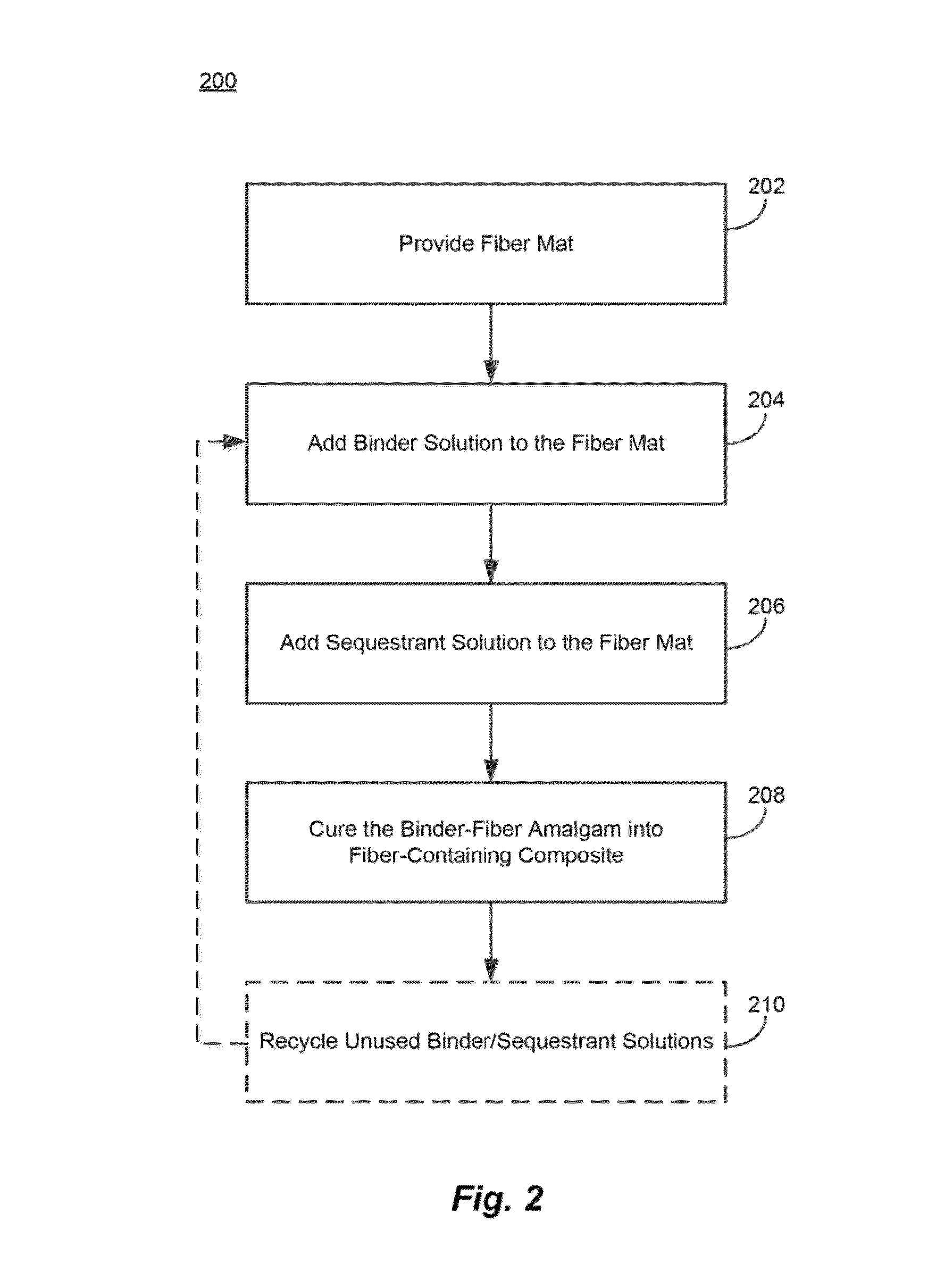Reduced salt precipitation in carbohydrate containing binder compositions
a technology of carbohydrate and salt precipitation, which is applied in the field of reduced salt precipitation in carbohydrate containing binder compositions, can solve the problems of increasing the use restrictions of salt precipitation, and increasing the cost of these materials, so as to reduce the rate of salt precipitation, the effect of low solubility and low capacity for dissolved ions
- Summary
- Abstract
- Description
- Claims
- Application Information
AI Technical Summary
Benefits of technology
Problems solved by technology
Method used
Image
Examples
examples
[0092]The efficiency levels of some exemplary sequestrants were measured by determining threshold concentrations of the sequestrants needed to prevent formation of precipitates in a binder formulation prepared as follows: Mineralized water containing 10,000 ppm calcium, magnesium and sodium ions, 5000 ppm of iron ions, and 500 ppm of aluminum ions, was added to a binder solution in a water:binder weight ratio of 80:20. The binder solution included dextrose mixed with a urea-glyoxal crosslinking agent and 2.5 wt. % ammonium sulfate, 2.5 wt. % diammonium phosphate, and 2 wt. % amino-silane (A-1100).
[0093]Sequestrants were added to the above-described binder formulation and threshold sequestrant concentrations were measured below which a salt precipitate would appear. Table 1 shows the threshold precipitate concentrations in wt. % of the added sequestrant in the binder formulation:
[0094]
TABLE 1Threshold Sequestrant Concentrations to Prevent Salt Precipitation:SequestrantThreshold Seque...
PUM
| Property | Measurement | Unit |
|---|---|---|
| Concentration | aaaaa | aaaaa |
| Acidity | aaaaa | aaaaa |
| Precipitation enthalpy | aaaaa | aaaaa |
Abstract
Description
Claims
Application Information
 Login to View More
Login to View More - R&D
- Intellectual Property
- Life Sciences
- Materials
- Tech Scout
- Unparalleled Data Quality
- Higher Quality Content
- 60% Fewer Hallucinations
Browse by: Latest US Patents, China's latest patents, Technical Efficacy Thesaurus, Application Domain, Technology Topic, Popular Technical Reports.
© 2025 PatSnap. All rights reserved.Legal|Privacy policy|Modern Slavery Act Transparency Statement|Sitemap|About US| Contact US: help@patsnap.com



